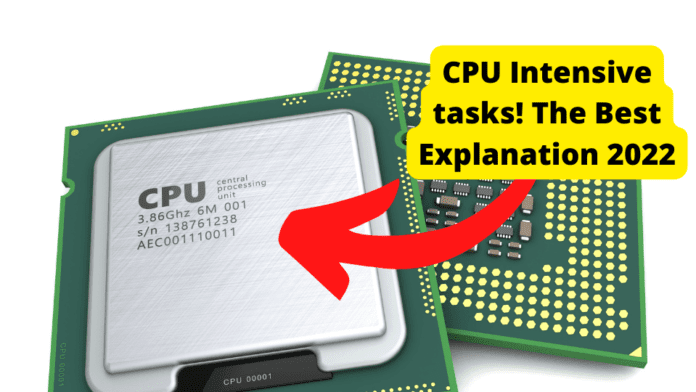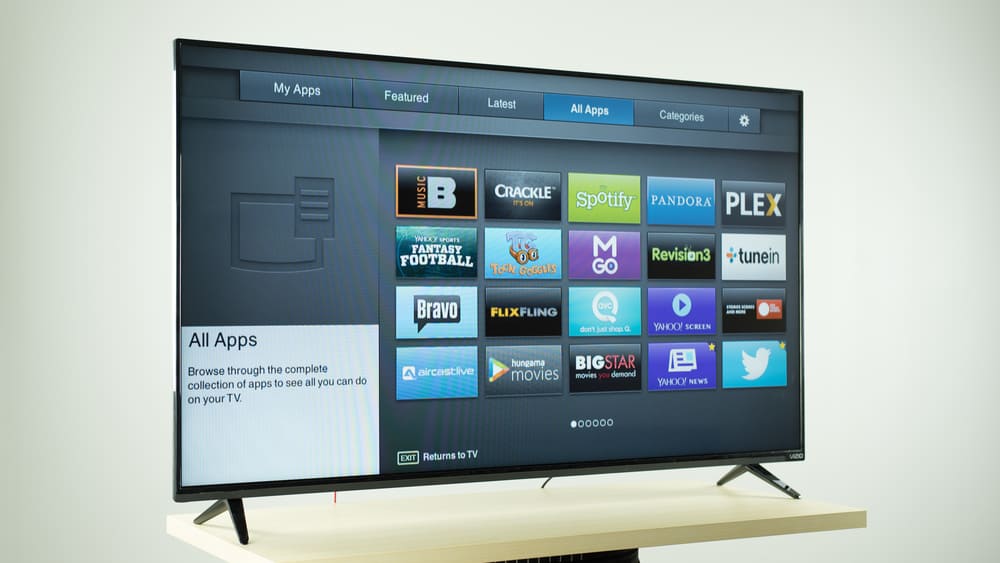Key Takeaways
- CPU-intensive tasks like video editing, high-res gaming, and DVD burning demand powerful processors like AMD Ryzen 9 3900XT.
- Resource-intensive applications slow systems; monitor usage via Task Manager to optimize performance.
- High-resolution games (e.g., Warhammer 2, Red Dead Redemption 2) strain CPUs due to AI and graphics rendering.
- GPU is critical for graphic-heavy tasks (3D rendering, video editing) to offload CPU workload and boost efficiency.
- Balancing CPU/GPU power ensures smooth multitasking for gaming, content creation, and intensive computing tasks.
Sometimes programs and video games on your computer will overwork the Central Processing Unit (CPU).
Here are a few video games and programs to avoid. Video and graphics editing programs, games with high-resolution graphics, DVD burning programs and applications, and photo formatting programs.
The best processor for a high CPU workplace is the AMD Ryzen 9 39000XT Processor. What does resource intensive mean?
Online video games that are CPU intensive are Warhammer 2, Shadow of the Tomb Raider, and Red Dead Redemption 2. What are graphic intensive tasks?
The CPU-intensive tasks that require an excellent GPU are video editing programs and programs that create or use 3-D graphics rendering.
The Central Processing Unit (CPU) is regarded as the brain of the computer system because it is responsible for performing most of its major tasks.
The CPU is what processes data and authorizes commands. The CPU’s capacity to perform is determined by the speed at which the programs run in the system.
The CPU’s running speed is then noticed when the time it usually takes to respond to a command is either increased or reduced.
Tasks that seem to delay the CPU’s running speed are what are regarded as CPU-intensive tasks.
This is because these tasks are complicated operations that take up more RAM and, in some cases, can entirely shut down the server.
The running of these CPU-intensive tasks can slow down the system and hinder it from achieving other given tasks.
As we advance, we will identify these typical CPU-intensive applications and provide an alternative to running your system alongside those applications.
What are Some CPU Intensive Tasks?
CPU-intensive tasks are those higher CPU usage programs that are being processed. The CPU usage indicates the amount of stress/strain the processor is going through.
It can amount to a hundred (100) percent maximum, which you can use to assess the intensiveness of a task to an operating system.
These CPU-intensive programs include; games with higher-resolution graphics, DVD burning programs, video and graphics editing programs, and applications that convert film and photo formats.
Below are a few programs and video games that require high processing power and are known for driving up CPU usage.
Video and Graphics Editing Programs
Programs like Adobe Photoshop CS6 and Blender, a three-dimensional graphics and animation editor, require you to do multiple tasks simultaneously so that it will increase your CPU usage.
The video and graphic editing process require a speedy processor that can slow down the overall process of the system. Some of the critical roles video editing plays are;
Rendering timelines to create previews
Generating flow of multiple tracks in real time
Importation and exportation of video/graphic files
Encoding of the video/graphic formats
Creating transitions and effects; and several others.
Usually, the CPU is responsible for carrying out every task. Still, the above listed are tagged as more powerful by the editing process.
Currently, you require a minimum of six (6) cores which can be increased to twenty-four (24) cores to process advanced tasks.
In editing videos and graphics, the CPU processes all the tasks majorly. Still, it plays a significant role in managing the processing of video files.
This connotes that it swiftly provides real-time video clip previews, thereby assisting the editor in choosing the appropriate cuts.
However, due to the high-definition videos made accessible to even our smartphones, the speed required for the high-resolution editing process becomes very demanding.
In general, this affects the system’s overall performance, making this process fall into the category of CPU-intensive tasks.
Video Games With High-Resolution Graphics
Most PC gamers believe that higher resolution settings are suitable for the gaming experience, but they do not realize what these settings do.
First off, what do we mean by resolution? Resolution is the number of present pixels displayed on your screen that tells the overall image quality.
Resolution is expressed in two forms — 1080p (1920 × 1080) or 1440p (2560 × 1440); the first number (1920) refers to the width of the screen, calculated in pixels, and the second number (1080) refers to the height, also calculated in pixels. Click here for more explanations on gaming settings.
Increasing the graphic resolution of your system would result in a noticeable swelling of the image quality being displayed.
This is a result of more graphical details being enhanced per frame. This excites gamers as the images appear more realistic, increasing the thrilling effect.
However, the higher the frame, the more processing time required of the CPU, meaning a reduced amount of speed for the system’s operation.
Video games like Cyberpunk 2077 and Far Cry 6 have high frames per second and high-resolution graphics that drain the CPU’s usage.
Some of these games with higher resolution graphics are re-emphasized here, giving adequate details to their amount of space, display resolution, and much more.
DVD Burning Programs and Applications that Convert Film and Photo Formats
This computer software application converts DVD or Blu-Ray films into different file formats, basically the ISO format.
A DVD-burning software is a program that aids your system in copying all your DVD videos and CD music for backing up purposes. This process has become one of the preferred choices for storing files.
However, it takes a toll on the Central Processing Unit (CPU) because, in the burning process, the software aligns and arranges your computer’s laser beam’s force to fit what is being read and copied into the disk.
DVD burning is very complex and requires the input of high-level experts when carrying out the process.
When the DVD burning process is running at a low priority on the taskbar, other applications can reduce its speed and hog up CPU time.
Therefore, taking it up to a higher priority in the task manager could increase its running speed by about ten (10) times faster than it initially was, but affecting the usage of the CPU because of its high-intensity work.
DVD burning programs like DVD styler and Burn Aware use the CPU. The CPU has to encode the DVDs. The converting of film through transcoding takes a great deal of power from the CPU.
Adobe Photoshop, a photo formatting and editing program, takes a lot of power from the CPU from processing 4K images, making gifs, and making layers.
The Best Processor for a High CPU Workplace? AMD Ryzen 9 3900XT
The Ryzen 9 3900XT has 3200MHz or 320 billion times the images are refreshed per second. It has 12 CPU cores and 24 threads. These specifications make it the best gaming and content-creating processor.
This is a powerful 12-Core processor comprising 24 threads designated for socket AM4 motherboards.
It is built with the Zen Core architecture, and this 7nm Ryzen processor provides elevated performance compared to its predecessor.
Its base clock runs at 3.8GHz, reaching a maximum boost clock speed of 4.7GHz.
The processor also features 64MB of L3 cache and serves as an assistant for 3200 MHz DDR4 RAM. Below is a simple table fully illustrating its general specifications.
Resource Intensive Meaning
This refers to a process, thread, or group of processes or threads that eat up a lot of time or resources of the system or require an exclusive permit to a large amount of data.
A task regarded as resource intensive demands a large number of resources or time or an exclusive permit to vast amounts of data.
When multitasking on your system, the act can most times slow down your computer process and affect the workings of some applications. There are several reasons behind this problem which may include;
One or two applications consume high resources running in the background; that is, a high CPU usage application.
No space on the hard disk
A virus or malware may have attacked your system’s application running process.
Your system’s RAM is lower than the needed memory space to run an application.
Having identified these possible reasons, the best countermeasure is to practice resource management.
The various applications running in a system are subject to various resources, depending on their requirements.
Some of these applications may consume a large number of resources, thereby reducing the system’s speed and, in most cases, forcing stop other applications running in the background.
To avoid such issues, you must first be aware of the particular application consuming the high resource. This information is given by a tool that usually comes with the system itself called the Task Manager.
This tool — The Task Manager, monitors all the processes and applications running in your system and provides all the necessary information about such applications.
The information it provides includes the number of CPU processors each application consumes or uses and how much memory those applications occupy.
Therefore, the task manager would be able to let you identify this problem and put a stop to such resource-intensive applications.
CPU Intensive Games
Currently, most contemporary games are more heavily dependent on the GPU than the CPU. But, some games and some situations can get intensive on the CPU.
For example, generally, MMO can be demanding on the computer processor during massive battles comprising several entities.
Shooters in first-person perspectives can also be very difficult on the CPU in cases where there are multiple players.
Another type of game that can also drive the processor to its limit is Sim-Style and strategy games. Below are the online video games that are CPU intensive.
Warhammer 2
This turn-based strategy game draws much energy from the CPU because of AI’s calculation and engine.
Creative Assembly developed it, one of the latest editions of the total war series that has been in operation for a long time, released in 2016.
War Hammer 2 is a strategy game that enables you to control an empire to attempt to conquer the world.
The setting of this game is the War Hammer Universe, meaning there is an inside backstory than what is regularly seen in the usual Total War games.
Controlling an empire is just a fragment of the game, as the actual exciting part lies in the battlefield where you lead your troops into.
On the battlefield, each group of army troops is made up of special units; that is to say, a different gaming style is required for each troop.
It is also on the battlefield that the CPU gets overworked. The load on the CPU is determined by the size of the different army troops and in cases where there is a city in sight.
The minimum requirements of this game are; CPU: Intel Core 2 Duo, GPU 1GB Direct X 10 (Nvidia GeForce GTX 460 or AMD Radeon HD 5770), RAM: 5GB, Storage: 60GB or more.
The CPU’s processing power is largely affected because of the amount of Artificial Intelligence calculations employed by enemy troops within the game that could last up to 5 minutes.
The game engine and graphic design also accumulate much processing power.
Therefore, for this game, you will require the use of a minimum Quad-core processor that would run it on a 1080p medium with a more remarkable FPS gain.
Shadow of the Tomb Raider
An action-based RPG game that has to divide a task in the game into multiple cores.
This is a video game packed up with action and adventure. The major character in the game, Lara Croft, wanders around the tropical parts of the Americas in her search for the legendary lost Inca city — Paititi.
During her mission, she would combat enemies with the use of both her firearm and stealth looting.
Shadow of the Tomb Raider is CPU taxing as it provides some higher-level immersions experienced in regular action-adventure games.
The game also places significant pressure on the computer hardware due to its high-level immersion.
During the performance measurement of the game, it had a leap from 4 cores to 6 cores, producing almost 20% in performance gain.
Following this, the increased performance was lesser. Nevertheless, the game is very taxing and requires a lot of pressure regarding CPU performance.
Therefore, a suitable multi-core processing device would need to drive the highest frame rates possible.
Red Dead Redemption 2
An action-adventure game set in the wild west takes a significant amount of power from the CPU because of the graphics rendering and the enemy AIs.
Rockstar Games developed the sequel to the exclusive console Red Dead Redemption.
It is an action and adventure game that is played in both first-person and third-person points of view. The game style is open-world with a lot of plants and animals.
The open-world style can be performed online or during a single-player open-field mode, where you combat enemies with firearms, explosives, or through close combat.
The minimum requirements of this game includes; CPU: Core i5 – 2500K or AMD FX – 6300; GPU: 2GB Direct X 11 (Nvidia GeForce GTX 770 or AMD Radeon R9 280); Ram: 8GB; Storage: 150GB.
The virtual world of this game is very large, demanding more from the CPU, not including its graphics.
The CPU power is largely drawn due to its open world environment, many NPC, and Artificial Intelligence (AI) enemies.
The game’s taxing title requires a powerful CPU like the Core i5 9th generation or the Ryzen 7 3800X processor.
The game’s performance would be excellent if there were a powerful CPU comprising 6.8 cores and a great GPU for support.
What are Graphic Intensive Tasks?
Graphic intensive tasks are heavy computing tasks that require using an excellent Graphic Processing Unit (GPU) as a co-processor with the CPU.
The GPU is generally used to fasten-up tasks that are demanding on the memory of the system, like video editing, gaming, or graphics rendering.
GPUs are compulsory for performing those tasks as they have several cores and superior bandwidth. These graphic intensive tasks include an image or video editing, gaming, image recognition, 3D graphics rendering, etc.
What Tasks Require a Good GPU?
A good GPU or graphics processing unit is a requirement for video editing and 3D graphics rendering.
The Graphics Processing Unit (GPU) is required to accelerate graphics-related tasks and perform AI (Artificial Intelligence) scientific computing tasks.
This is because the GPU relieves the CPU of some memory and compute-intensive tasks, thereby speeding up the process of carrying out such tasks. The tasks that require an excellent GPU include;
- Image and Video Editing
- Intensive Computing
- Video Gaming
- Video Editing (in content creation)
- 3D Graphics Rendering
Conclusion
Having correctly identified these CPU-intensive tasks and prefer an alternative to running these tasks on your system, you can rest assured as you carry out your daily tasks in your system without any glitches or abrupt stops.
Remember to identify those over-usage applications with your resource manager and utilize a good GPU for the smooth running of any of your graphics-intensive tasks that we placed, and experience the best out of your operating system.






